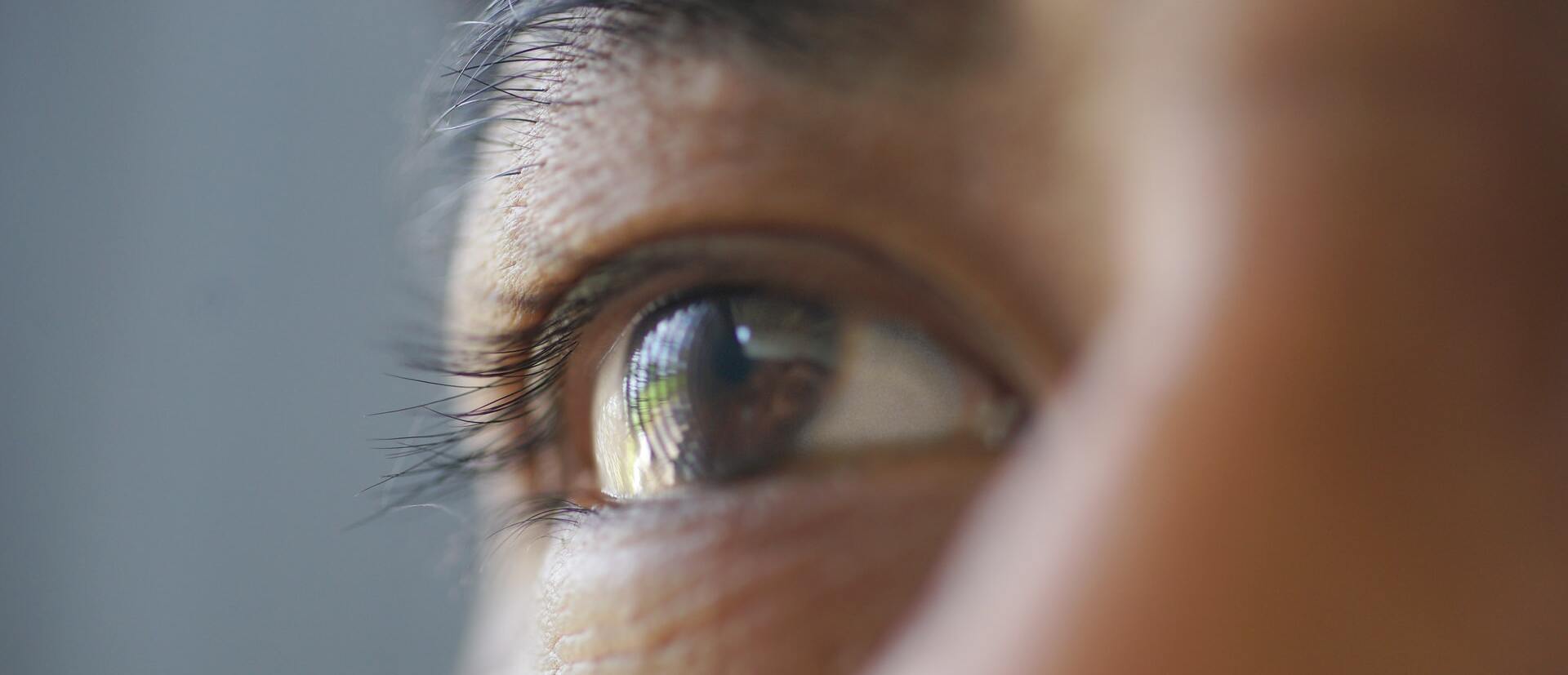
Lutein and zeaxanthin [1] — yellow carotenoid antioxidants that are found in high concentrations in the macula region of the retina —are well-known for the role they play in supporting eye health. Research suggests that lutein and zeaxanthin may have value in promoting macular health [2] and clear vision. [3,4,5] A large part of the eye health role that lutein and zeaxanthin play is in mitigating the effect of blue light on eye damage that would otherwise occur.
About blue light
Blue light radiation is relatively ubiquitous, with sources including sunlight, digital devices (computers, tablets, smartphones, etc.), and artificial light – so it is difficult to avoid. [6,7,8,9,10,11] This is problematic since, upon passing through the lens of the human eye, it focuses upon the macular area of the retina, penetrating deeply with great potential to damage retinal tissue. [12,13,14,15,16] This ongoing exposure to blue light can be hazardous to the retina.<sup>16</sup>
The effects of blue light
It should be noted that it takes relatively little blue light exposure – especially from digital devices – to cause damage. Headache, eye fatigue, and other indications of eye strain are associated with the daily use of video display terminals on computers and other electronic devices are common with 3 or more hours/day of exposure. Now consider that 30% of adults spend more than half their waking hours (more than 9 hours) using a digital device per day, 50% of Americans use digital devices more than 5 hours per day, and 70% use two or more digital devices at the same time. [17]
A 2011 study [18] of 477 office workers found that significant symptom prevalence of blue light exposure was found in women and men, respectively:
Eye strain: 50.7% and 32.6%
Disturbed visual acuity: 38.3% and 21.2%
Mucosal dryness and eye burning: 46.5% and 24.2%
These visual symptoms resulting from blue light digital exposure is referred to as Computer Vision Syndrome (CVS). [19]
The role of lutein and zeaxanthin
The good news is that supplementation with lutein and zeaxanthin can substantially protect against blue light damage. That is the major role that these two carotenoids naturally play in the human body.
Of all the carotenoids, only lutein and zeaxanthin isomers (RR-zeaxanthin and RS (meso)-zeaxanthin) are located in the macula of the eye. Lutein is preferentially deposited in the peripheral macula, RR-zeaxanthin in the mid-peripheral macula, and meso-zeaxanthin at the center of the macula (the region most susceptible to photo-oxidative damage). Since these carotenoids are yellow, they selectively absorb high-energy blue light, effectively protecting the retina from the region of the light spectrum that can cause tissue damage. In short, they act as primary filters of high-energy blue light—sort of like an internal pair of sunglasses for your eyes.
The importance of supplementation
It should also be noted that the average U.S. dietary intake of lutein daily is less than 2mg, and zeaxanthin is less than 0.5 mg. This is far below the 10-20 mg of lutein and 2-5 mg of zeaxanthin shown in research to be beneficial. Consequently, supplementation is a viable approach to maintain optimal levels of all three macular carotenoids to support visual health.
References:[1] Bone RA. Landrum JT. Methods Enzymol 1992:213:360–6.[2] Age-Related Eye Disease Study 2 Research Group. JAMA. 2013 May 15;309(19):2005-15.[3] Lyle BJ, et al. Am J Epidemiol. 1999 May 1;149(9):801-9.[4] Brown L, et al. Am J Clin Nutr. 1999 Oct;70(4):517-24.[5] Chasan-Taber L, et al. Am J Clin Nutr. 1999 Oct;70(4):509-16.[6] Nakashima Y, et al. Free Radic Biol Med. 2017 Mar 15. pii: S0891-5849(17)30134-X.[7] Tosini G, et al. Mol Vis. 2016 Jan 24;22:61-72.[8] The Vision Council. Eyes Overexposed: The Digital Device Dilemma. 2016 Digital Eye Strain Report. Thevisioncouncil.org.[9] The Vision Council. Hindsight is 20/20/20: Protect your eyes from digital devices. 2015 Digital Eye Strain Report. Thevisioncouncil.org.[10] Smick K, et al. Blue Light Hazard: New Knowledge, New Approaches to Maintaining Ocular Health. Report of a Roundtable: March 16, 2013, New York City, NY, USA. Essilor of America.[11] Kuse Y, et al. Sci Rep. 2014 Jun 9;4:5223.[12] Tosini G, et al. Mol Vis. 2016 Jan 24;22:61-72.[13] Wu J, Seregard S, Algvere PV. Photochemical damage of the retina. Surv Ophthalmol. 2006 Sep-Oct;51(5):461-81.[14] Algvere PV, et al. Acta Ophthalmol Scand. 2006 Feb;84(1):4-15.[15] Scientific Committee on Emerging and Newly Identified Health Risks (SCENIHR). 2012. Health Effects of Artificial Light. Accessed from http://ec.europa.eu/health/scientific_committees/emerging/docs/scenihr_o_035.pdf.[16] Okuno T, Saito H, Ojima J. Evaluation of blue-light hazards from various light sources. Dev Ophthalmol. 2002;35:104–12.[17] Richer S. Eye Health Insider. December 2016: 4.[18] Kowalska M, et al. Med Pr. 2011;62(1):1-8.[19] Akinbinu TR, et al. Medical Practice and Review. 2014;5(3):20-30.
Get the best supplements today

